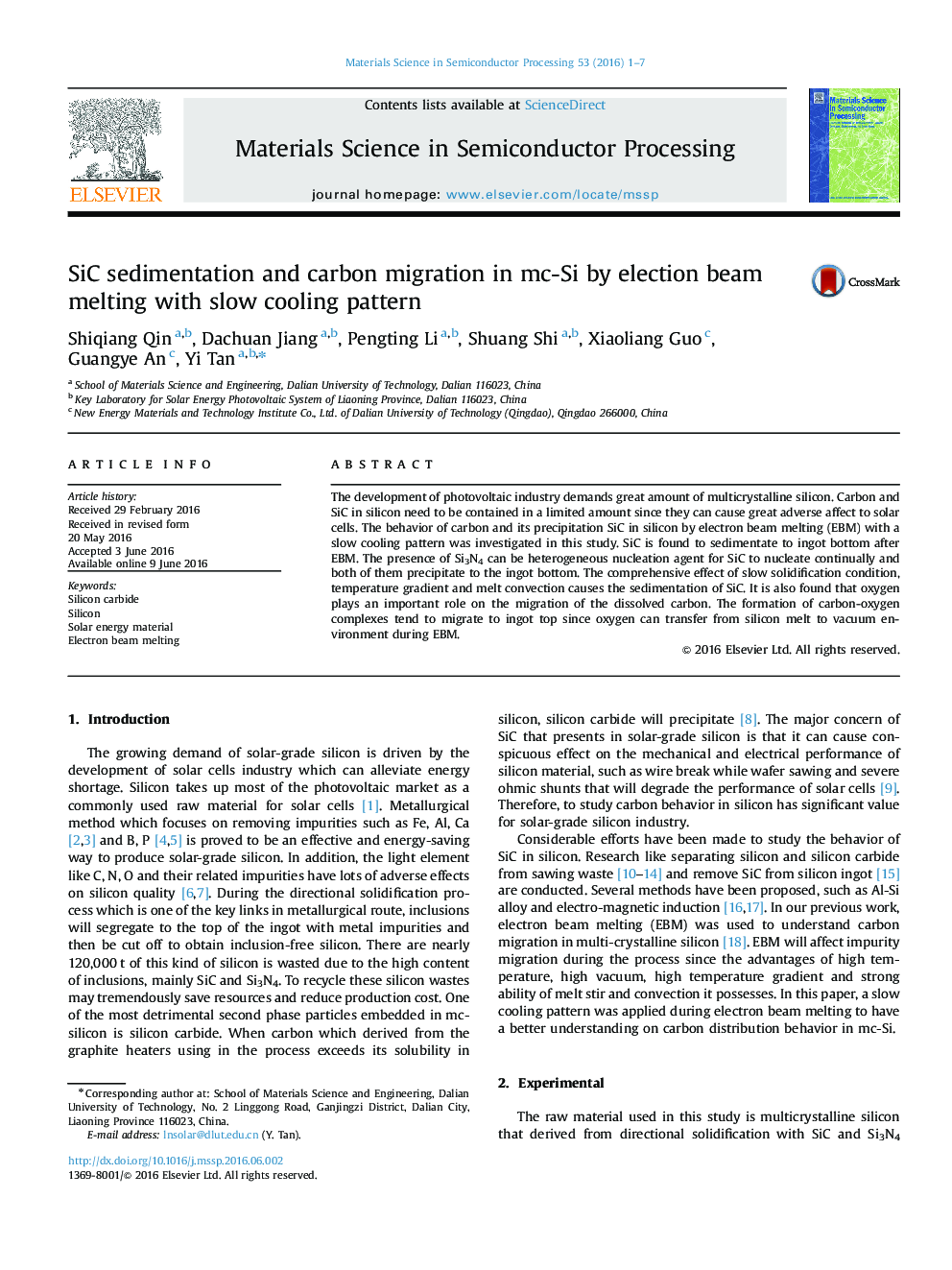| Article ID | Journal | Published Year | Pages | File Type |
|---|---|---|---|---|
| 727790 | Materials Science in Semiconductor Processing | 2016 | 7 Pages |
The development of photovoltaic industry demands great amount of multicrystalline silicon. Carbon and SiC in silicon need to be contained in a limited amount since they can cause great adverse affect to solar cells. The behavior of carbon and its precipitation SiC in silicon by electron beam melting (EBM) with a slow cooling pattern was investigated in this study. SiC is found to sedimentate to ingot bottom after EBM. The presence of Si3N4 can be heterogeneous nucleation agent for SiC to nucleate continually and both of them precipitate to the ingot bottom. The comprehensive effect of slow solidification condition, temperature gradient and melt convection causes the sedimentation of SiC. It is also found that oxygen plays an important role on the migration of the dissolved carbon. The formation of carbon-oxygen complexes tend to migrate to ingot top since oxygen can transfer from silicon melt to vacuum environment during EBM.
